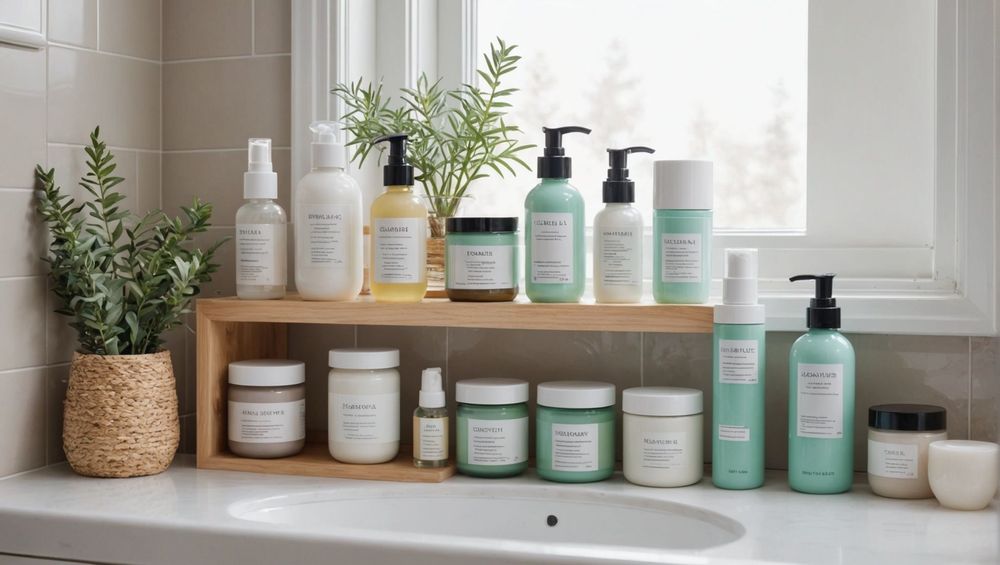Skincare acids are the unsung heroes of a radiant complexion, each playing a crucial role in targeting specific skin concerns. From ascorbic acid, known for its brightening properties, to salicylic acid, a favorite for acne-prone skin, understanding these potent ingredients is essential. This guide will provide you with an overview of various skincare acids, their benefits, and how to incorporate them into your routine effectively. Let’s dive into the intricate world of skincare acids and discover which ones might be your new best friends!
What Are Skincare Acids?

Skincare acids are primarily exfoliating agents that help achieve smooth, radiant skin by sloughing off dead skin cells. They can be divided into two main categories: alpha hydroxy acids (AHAs) and beta hydroxy acids (BHAs), both of which have distinct properties and benefits. AHAs, such as glycolic and lactic acid, are water-soluble and work on the skin’s surface, while BHAs like salicylic acid are oil-soluble and penetrate deeper into the pores. Both types modulate how the skin behaves, resulting in fresher, smoother, and clearer skin. Here are some key characteristics:
- AHAs are great for sun-damaged skin and improving skin texture.
- BHAs excel in treating acne and reducing oiliness.
- Acids help in stimulating collagen production.
- Regular use promotes a brighter complexion and even tone.
- They can aid in better absorption of other skincare products.
Popular Skincare Acids and Their Benefits

Understanding the variety of skincare acids available can help you tailor your routine. Here’s a breakdown of some of the most popular acids, along with their particular benefits:
- Ascorbic Acid (Vitamin C): A powerful antioxidant, it brightens the skin, evens out skin tone, and decreases the appearance of fine lines.
- Hyaluronic Acid: Naturally occurring, this acid provides intense hydration, plumping the skin and reducing the appearance of wrinkles.
- Lactic Acid: An AHA that exfoliates gently, suitable for sensitive skin, and helps improve skin texture and hydration.
- Glycolic Acid: The most potent AHA, it effectively exfoliates the skin’s surface and assists in fighting signs of aging.
- Salicylic Acid: A BHA ideal for oily and acne-prone skin, it penetrates deep into the pores, clearing out excess oil and preventing breakouts.
How to Incorporate Acids into Your Skincare Routine
Incorporating skincare acids into your routine requires a thoughtful approach to ensure compatibility with your skin type. Here are some best practices for introducing these acids:
- Start Slow: Begin with lower concentrations to assess your skin’s tolerance. For instance, use products with 5-10% concentration before moving up.
- Patch Test: Always perform a patch test before applying a new acid to your face, especially if it’s your first time with that ingredient.
- Frequency: Use exfoliating acids 2-3 times a week. Hydrating acids can be used more frequently.
- Layering: Apply acids on clean, dry skin, and follow up with serums or moisturizers.
- Sun Protection: Since AHAs can make your skin more susceptible to sun damage, always use sunscreen during the day.
Potential Side Effects and Precautions
Although skincare acids can provide incredible benefits, it’s important to be aware of potential side effects, especially with excessive use. Some common reactions might include:
- Redness or irritation, especially for sensitive skin.
- Increased sun sensitivity due to the exfoliation process.
- Dryness or flaking, particularly with stronger formulations.
- Allergic reactions to certain acid formulations or ingredients.
- Over-exfoliation, which can lead to compromised skin barriers.
To minimize side effects, ensure you follow the recommended usage guidelines and listen to your skin. If irritation occurs, discontinue use and consult a dermatologist for personalized advice.
Conclusion
Understanding skincare acids is vital for anyone looking to enhance their skin health and achieve a glowing complexion. From ascorbic acid to salicylic acid, each ingredient serves a unique purpose, helping you address various skin concerns effectively. By following best practices for incorporation, while being mindful of any potential side effects, you can create a balanced and effective skincare routine tailored to your needs. Remember, consistency is key in skincare, and with the right approach, you can unlock the secret to beautifully radiant skin.
FAQs
1. What are the differences between AHAs and BHAs?
AHAs are water-soluble acids that primarily exfoliate the surface of the skin, making them ideal for improving texture and evening skin tone. BHAs, on the other hand, are oil-soluble and can penetrate deep into the pores, making them effective for treating acne and excess oil build-up.
2. Can I use multiple acids in my routine?
Yes, but it’s best to introduce them gradually. Start with one acid to gauge your skin’s reaction, and avoid using multiple strong exfoliants simultaneously to prevent irritation.
3. How often should I use exfoliating acids?
Typically, exfoliating acids can be used 2-3 times a week. It’s crucial to monitor your skin’s tolerance and adjust frequency based on its response.
4. Can I use skincare acids if I have sensitive skin?
Yes, but you should choose milder options like lactic acid, start slow, and look for products specifically formulated for sensitive skin. Always patch test before full application.
5. Is sunscreen necessary when using acid-based products?
Absolutely! Since acids can increase sun sensitivity, applying a broad-spectrum sunscreen every day is vital to protect your skin and retain its health.
